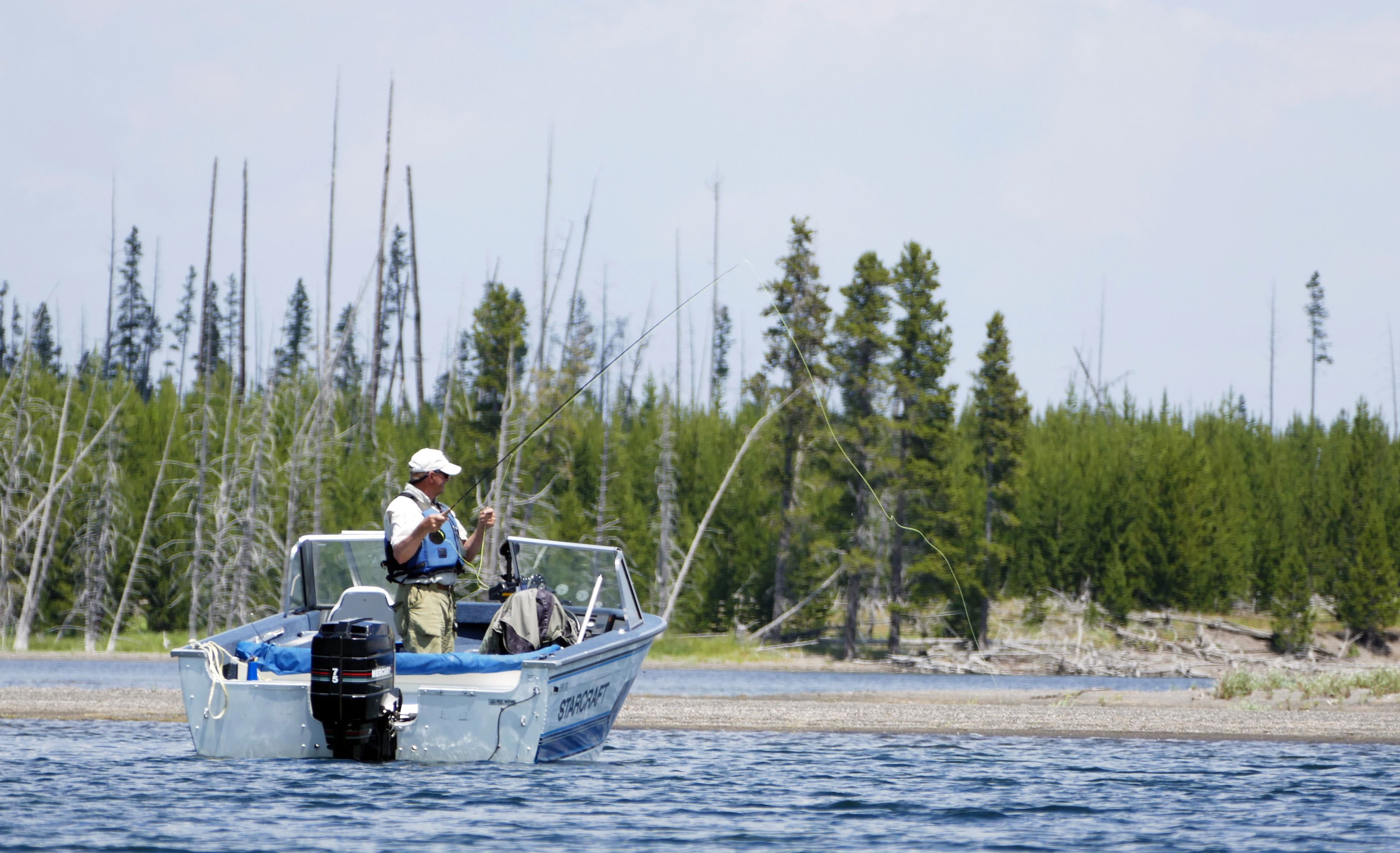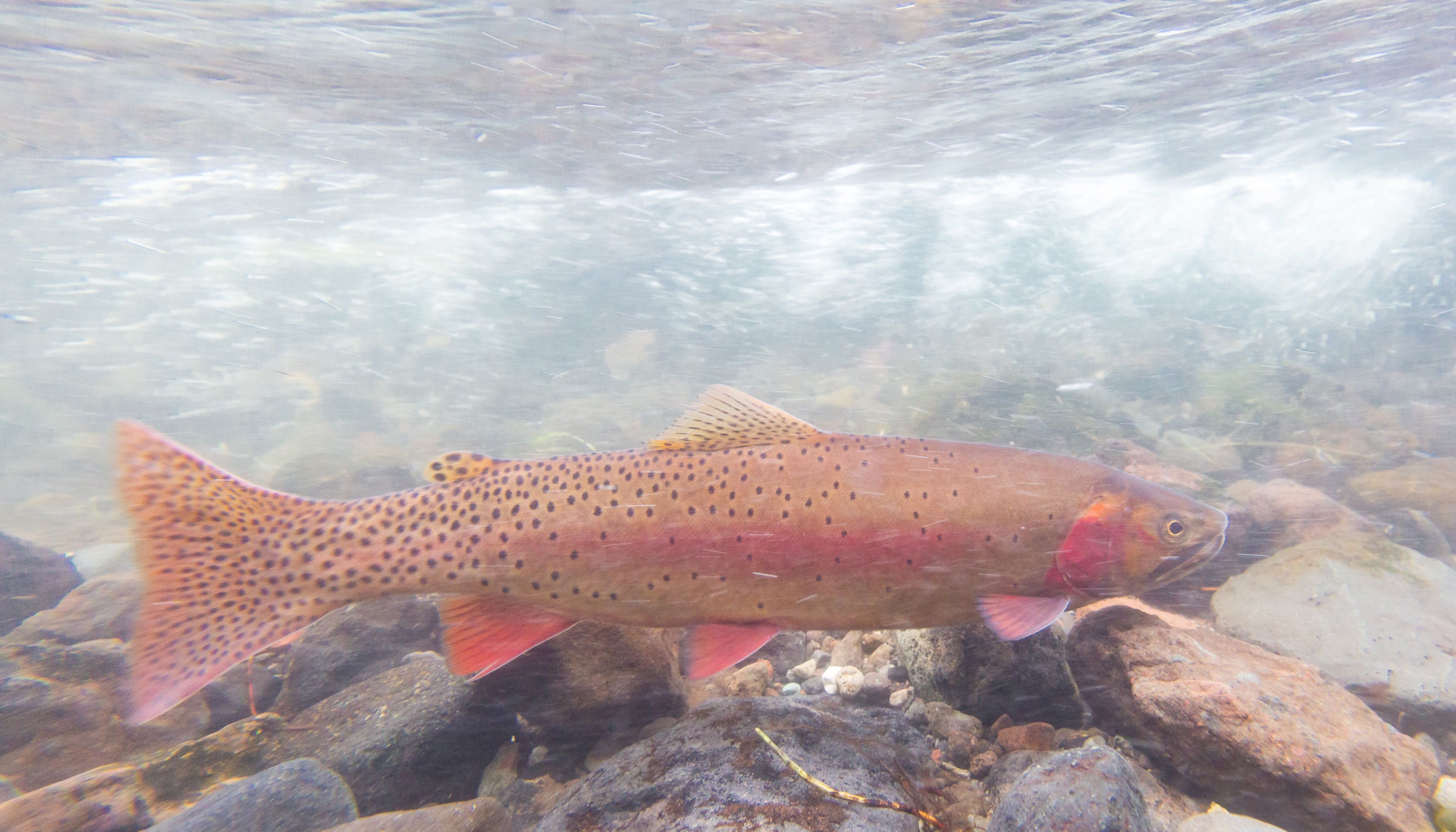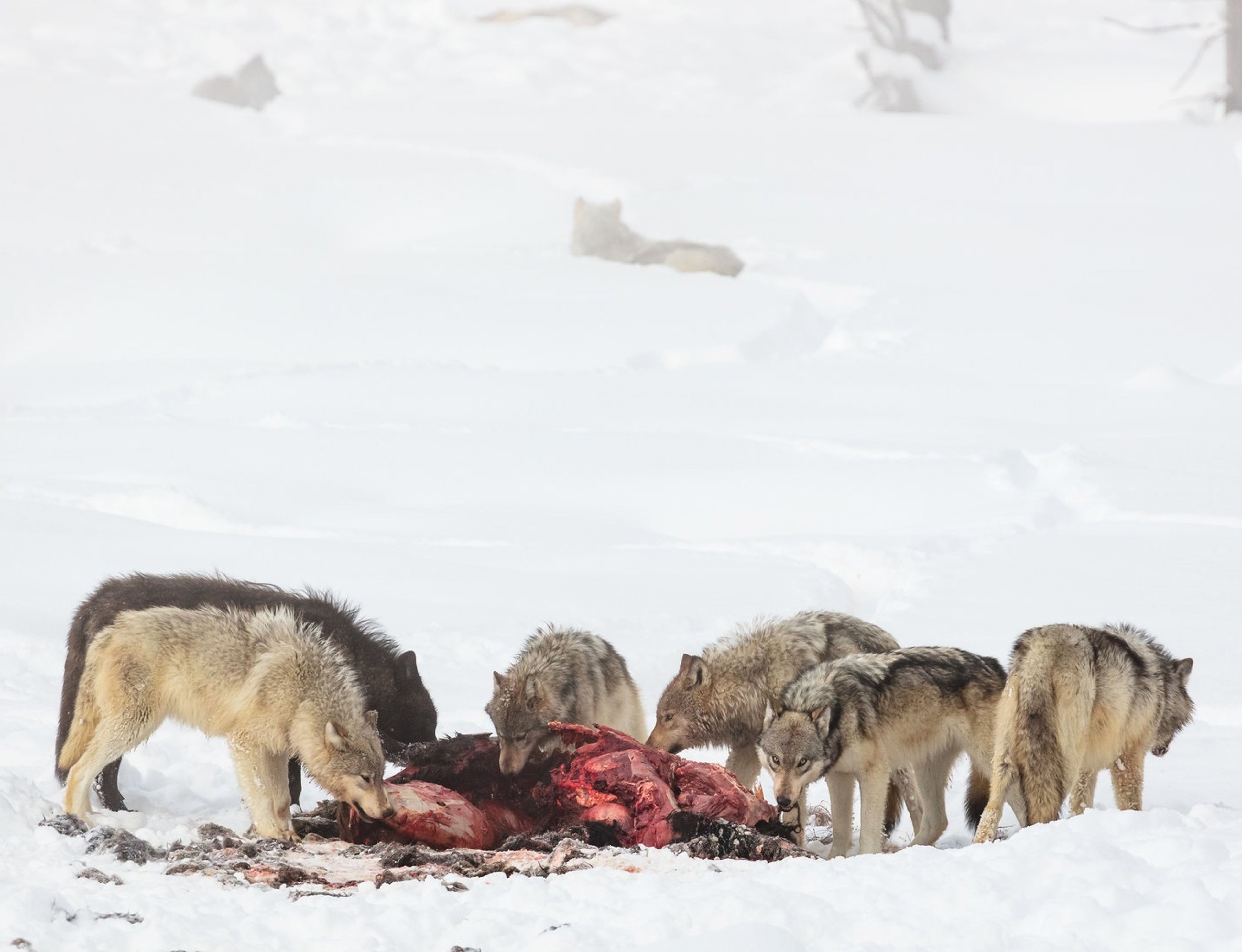Yellowstone fisheries chief highlights top spots for biggest trout
Cutthroat trout make a comeback in Yellowstone Lake
Anglers seeking big trout in Yellowstone National Park should mark their calendars for the Memorial Day weekend.
That’s when park fisheries chief Todd Koel said the Yellowstone cutthroat trout bite could be ferocious on Yellowstone Lake. What’s more, the lake’s icy shell is predicted to be melted off by then.
“Yellowstone Lake is definitely the place to come,” Koel said during a recent online update about the park’s fisheries. “Especially early in the year.
“Catching a fish 22-, 23-, 24-inches long is not uncommon,” he said. “In fact, I think you can say that’s the most abundant size of fish in the lake.”
Richard Parks, who literally wrote the book on “Fishing Yellowstone National Park,” recommended a plain Olive Woolly Worm as one of the best fly-fishing options for the lake. Gray mayfly hatches are also sporadic, making an Adams dry fly a good top-water choice.
“Without question the leading lure on the lake is the Spin-a-Lure,” Parks wrote.
Regulations
Catch-and-release of native cutthroats is mandatory in the park, but anglers can dine on their memories of the colorful fish. Yellowstone’s fishing season extends from the Saturday of Memorial Day weekend through Oct. 31.
The exception this year will be the opening of the lower Madison River from the Montana state line downstream and the Gardner River from Osprey Falls to its confluence with the Yellowstone River. These two streams will now be open year-round. As a result, anglers may notice their fishing permit is now valid for an entire calendar year, although only apply to those two streams in the winter season.
Koel said there’s a possibility the year-round season could be extended to other park waters, depending on how things go with these two sections of stream.
Yellowstone Lake also contains cutthroat trout that have been tagged. Koel asked anglers to report the tagged fish. The tag has his phone number and the fish’s identification number printed on it.
Other points to remember about fishing in Yellowstone include that no lead weights are allowed and that only barbless hooks may be used.
Netting lake trout
Cutthroat have steadily rebounded in the lake following the Park Service’s nearly two decades of lake trout gillnetting, with intensive focus on netting dating back to 2012. In all, about 4.6 million lake trout have been killed, an estimated 90% of the adult population.
Lake trout were illegally introduced into Yellowstone Lake but weren’t detected until 1994. The fishes’ predation on cutthroat trout led the native species’ population to crash in a body of water that was once its stronghold. This resulted in repercussions across the ecosystem as fish-eating birds and bears had to find another source of protein.
That’s because lake trout are less available to predators as they spend most of their time in deeper water compared to cutthroats. As a consequence, anglers are required to keep any lake trout they catch, one more way to reduce their population.
Cutthroat rebound
In recent netting efforts, about 300,000 lake trout a year have been killed by five boats working all summer. Now that many of the larger lake trout have been removed, the fish’s population seems stacked with younger lake trout averaging about 2 years old, Koel said.
“You can see the dramatic decline we’ve forced in the large adult lake trout, the predatory lake trout, in Yellowstone Lake,” Koel said, referring to a graph. “The midsized lake trout have also declined over time. But it’s these young recruiting lake trout that are still remaining abundant in the lake. The reason we have to continue gillnetting is to make sure these young fish don’t grow to be older and mature and reproductive fish.”
The Park Service measures cutthroat populations by setting nets at 24 sites around the lake every August. Data from the surveys goes back to the 1980s. The goal is 40 fish per 100 meters of net, Koel explained. In at least two years that goal has been exceeded since increased netting pressure in 2012 was implemented. The park has regularly met its secondary goal of more than 25 fish per 100 meters of net in that timeframe.
“The other thing to note about our cutthroat trout in Yellowstone Lake is that they are much bigger than prior to the lake trout invasion,” Koel said. “An 18-inch fish now generally weighs twice what one would have weighed prior to the lake trout invasion.”
Koel isn’t sure of all the mechanisms affecting the cutthroat trout’s weight gain, but he said it could be because there are fewer cutthroat in the lake and therefore less competition among them for food.
“All I can tell you is the fish are big and beautiful,” he said. “We’re pretty happy about that.”
Other waters
For park anglers seeking colorful arctic grayling, with its high dorsal fin, Koel said Ice Lake is producing fish almost 16-inches long. Ice Lake is a 1-mile hike. The trailhead is located about 3.29 miles east of Norris Junction along the upper Gibbon River drainage. Some of those bigger grayling are also drifting down into Virginia Meadows, just below the lake, Koel said.
The upper Gibbon River was the site of a fish restoration project that began in 2017. Nonnative rainbow, brook and lake-dwelling grayling were all poisoned out of the drainage. The affected area included Ice, Grebe and Wolf lakes, as well as streams above Virginia Cascades.
“From our perspective it’s been a phenomenal success,” Koel said, with some of the fish showing up as far downstream as the Madison River.
The three-year project concluded when stream-dwelling grayling and westslope cutthroat trout were planted in the drainage.
Koel said Grebe Lake is producing 20-inch long westslope cutthroat trout. The trailhead to the lake is located 3.5 miles west of Canyon Junction. The hike is about 6.4 miles roundtrip.
In Grayling Creek, on the western side of the park but north of West Yellowstone, a westslope cutthroat trout reintroduction project that began in 2013 has been a success, Koel said. That work removed nonnative brown and rainbow trout from the tributary to Hebgen Lake.
“This is a pretty high-elevation, cold system,” Koel said. “So you can’t expect fish to get incredibly big there.”
The stream is easily accessible to anglers driving Highway 191, as it borders the road for about 7 miles.
Buffalo Creek
Continuing its work to remove nonnative fish from park waters, this August the Park Service will poison the lower portion of Buffalo Creek, a tributary to Slough Creek, from the park boundary downstream. The agency had planned a joint operation with the state of Montana to remove nonnative fish from the entire stream, but since the Montana portion of Buffalo Creek’s headwaters are in the Absaroka-Beartooth Wilderness, some conservation groups have contested the work.
Buffalo Creek contains rainbow trout that have interbred with native cutthroat trout.
Looking back to the historic 2022 floods in the northern portion of the park, Koel said the biggest change has been the rearrangement of the stream channels by the high water. Fish numbers did drop in the wake of the flooding, but those trout that weathered the storm are “chunky” and healthy, he said.











